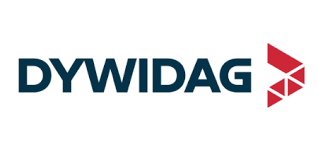Military Truck Market Report
Published Date: 15 December 2025 | Report Code: military-truck
Military Truck Market Size, Share, Industry Trends and Forecast to 2033
This detailed market report covers key insights into the Military Truck industry, including market size and growth projections for the forecast period of 2023 to 2033. It provides thorough analyses of market trends, segmentations, and regional dynamics influencing this critical sector.
| Metric | Value |
|---|---|
| Study Period | 2023 - 2033 |
| 2023 Market Size | $10.50 Billion |
| CAGR (2023-2033) | 5.2% |
| 2033 Market Size | $17.63 Billion |
| Top Companies | Oshkosh Defense, General Dynamics Land Systems, BAE Systems, Rheinmetall AG |
| Last Modified Date | 15 December 2025 |
Military Truck Market Report (2023 - 2033)
Military Truck Market Overview
Customize Military Truck Market Report market research report
- ✔ Get in-depth analysis of Military Truck market size, growth, and forecasts.
- ✔ Understand Military Truck's regional dynamics and industry-specific trends.
- ✔ Identify potential applications, end-user demand, and growth segments in Military Truck
What is the Market Size & CAGR of Military Truck market in 2023?
Military Truck Industry Analysis
Military Truck Market Segmentation and Scope
Tell us your focus area and get a customized research report.
Military Truck Market Analysis Report by Region
Europe Military Truck Market Report:
Europe's Military Truck market is foreseen to shift from $2.95 billion to $4.96 billion between 2023 and 2033. The ongoing geopolitical conflicts and NATO's increasing focus on member countries' defense capabilities will strengthen the demand for military transport vehicles.Asia Pacific Military Truck Market Report:
The Asia-Pacific Military Truck market is projected to reach $3.46 billion by 2033, up from $2.06 billion in 2023. This region experiences heightened military spending due to tensions in the South China Sea, leading to an increasing demand for robust logistic capabilities and advanced military transport solutions.North America Military Truck Market Report:
The North American market, particularly the United States, is anticipated to grow from $3.78 billion in 2023 to approximately $6.34 billion by 2033. Enhanced military budgets focused on modernization and troop transportation are key growth drivers in this region.South America Military Truck Market Report:
In South America, the Military Truck market is expected to grow from $0.53 billion in 2023 to $0.90 billion by 2033. The rise in security challenges and defense cooperation among nations is driving investments in military infrastructure, including transport vehicles.Middle East & Africa Military Truck Market Report:
The Middle East and Africa market is expected to rise from $1.17 billion in 2023 to $1.97 billion by 2033. The region's defense spending is driven by ongoing conflicts and the need for enhanced military logistics to support operations in challenging terrains.Tell us your focus area and get a customized research report.
Military Truck Market Analysis By Type
Global Military Truck Market, By Type Market Analysis (2023 - 2033)
Light Trucks dominate the category, with a market size of $6.84 billion in 2023 projected to increase to $11.48 billion by 2033, capturing a substantial 65.13% share of the overall market. Medium Trucks follow with growth from $2.39 billion to $4.01 billion, representing 22.75%. Heavy Trucks maintain a smaller share but are crucial for robust operations, expanding from $1.27 billion to $2.14 billion (12.12%).
Military Truck Market Analysis By Application
Global Military Truck Market, By Application Market Analysis (2023 - 2033)
Market segmentation by application reveals Army Operations as the largest segment, expected to grow from $5.72 billion (54.45% market share) in 2023 to $9.60 billion by 2033. Logistics and Supply Chain accounts for $2.24 billion, projected to reach $3.76 billion (21.33%). Transportation of Troops and Combat Support are also significant, representing 12.45% and 11.77% shares respectively.
Military Truck Market Analysis By Fuel Type
Global Military Truck Market, By Fuel Type Market Analysis (2023 - 2033)
The Military Truck market is increasingly diverse in fuel types. Diesel continues to lead the segment, with a market size of $6.84 billion and maintaining a 65.13% share through to 2033. Electric vehicles are rapidly gaining ground, expected to grow from $2.39 billion to $4.01 billion, representing 22.75%. Hybrid models, while smaller at $1.27 billion, are projected to double to $2.14 billion, ensuring a diverse lineup in military fleets.
Military Truck Market Analysis By Manufacturer
Global Military Truck Market, By Manufacturer Market Analysis (2023 - 2033)
Large manufacturers dominate the Military Truck market, with revenues starting at $6.84 billion and growing to $11.48 billion (65.13%). Medium manufacturers contribute $2.39 billion to $4.01 billion (22.75%), while small manufacturers are valued at $1.27 billion, expected to increase to $2.14 billion (12.12%) by 2033. The competitive landscape emphasizes innovation and technological advancements.
Military Truck Market Analysis By Technology
Global Military Truck Market, By Technology Market Analysis (2023 - 2033)
The market is primarily driven by Traditional Technologies, which account for an estimated market size of $8.62 billion (82.1% share). Advanced Technologies, including electric and autonomous functionalities, are gaining traction, expected to increase from $1.88 billion (17.9%) to $3.16 billion by 2033, highlighting the shift towards modernization and efficiency in military logistics.
Military Truck Market Trends and Future Forecast
Tell us your focus area and get a customized research report.
Global Market Leaders and Top Companies in Military Truck Industry
Oshkosh Defense:
A leader in defense vehicle manufacturing, offering a wide range of military trucks known for their durability and performance in extreme environments.General Dynamics Land Systems:
Known for its advanced armored vehicles and military logistics solutions, focusing heavily on innovation and technological advancements.BAE Systems:
A global defense and aerospace company that provides a variety of military trucks and innovative solutions for military operations.Rheinmetall AG:
This German company specializes in vehicle systems that include military trucks as part of their comprehensive defense and automotive divisions.We're grateful to work with incredible clients.









FAQs
What is the market size of the military truck?
The military truck market is projected to grow from $10.5 billion in 2023 to $18.1 billion by 2033, achieving a CAGR of 5.2%. This growth reflects increasing defense budgets and modernization efforts globally.
What are the key market players or companies in the military truck industry?
Key players in the military truck market include manufacturers such as Oshkosh Corporation, AM General, BAE Systems, and Rheinmetall AG. These companies play vital roles in vehicle design, production, and technological advancements.
What are the primary factors driving the growth in the military truck industry?
Growth drivers in the military truck industry include rising defense expenditures, increasing global military operations, and advancements in technology. Additionally, the focus on vehicle durability and multi-role capabilities is propelling market demand.
Which region is the fastest Growing in the military truck market?
North America is projected to be the fastest-growing region in the military truck market, with the market expected to increase from $3.78 billion in 2023 to $6.34 billion by 2033. Europe closely follows in growth, reflecting strong defense initiatives.
Does ConsaInsights provide customized market report data for the military truck industry?
Yes, ConsaInsights offers customized market report data tailored to specific client needs within the military truck industry. This allows for detailed insights into niche areas and unique market segments.
What deliverables can I expect from this military truck market research project?
Clients can expect deliverables such as comprehensive market analysis, competitive landscape insights, growth forecasts, and segment data breakdowns. Visual representations, such as graphs and charts, are typically included.
What are the market trends of military trucks?
Current trends in the military truck market include a shift toward electric and hybrid vehicles, enhanced technological integration, and an emphasis on logistical capabilities. Additionally, military modernization programs are expanding vehicle needs.
